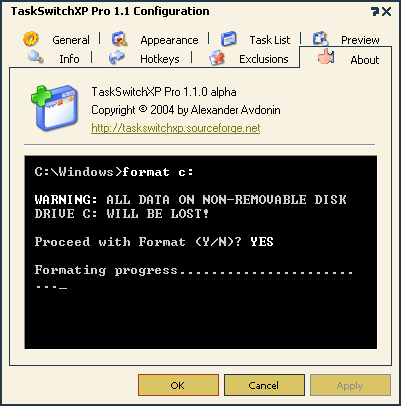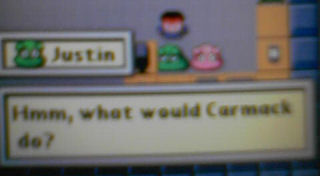When I got my GMail invitation a good half year ago from a friend of mine, I was really tempted to use it as my main account for private e-mails. It looked good, had nice features and above all one Gigabyte of free e-mail space was just fantastic. In the end I decided against using GMail. Occasionally I’m looking into my GMail account to see whether some e-mail got lost there, but that’s it.
I had three reasons to decide against GMail. One is that @gmail.com address. I bought beeger.net primarily to have this beeger.net e-mail-address. So I really don’t need some other. But still the 1 GB. Another reason not to use GMail was the distrust in GMail’s privacy. It scans your e-mails and shows you matching ads. While there is nothing you can say against some ads when using a free service, I just don’t like having my e-mails scanned and a profile created for me based on those e-mails. They vow that the e-mails are scanned only for keywords and not used any further, but you never know. Well ok, as an e-mail travels through the internet there are probably dozens of opportunities to scan it, but nevertheless I’m not the one to say “Oh, that’s ok, you can read my mail. It doesn’t matter to me. You may have fun with the spam I get, if you want, too.”. The last reason is that GMail doesn’t support any kind of encryption – no S/MIME no PGP. That’s quite logical. It’s impossible to find any keywords in an encrypted e-mail.
Although I have decided against GMail, I think it is a great idea and nice service. GMail has some unique features like bundling e-mails into conversations. I can understand anyone who uses and likes GMail.
Unfortunately since GMail was released to beta testers there are people developing and people using hacks for GMail. It begins with hacks like a GMail2POP3-bridge that allows you to use GMail through your normal e-mail client and it probably won’t end with GMail drive that allows you to use GMail as an external drive. While very inventive, those hacks will kill GMail in the end. GMail’s source of income are the ads that are displayed along your e-mails. But if most users use those hacks that prevent the ads from being seen by the GMail account owner, then GMail cannot earn anything for showing those ads.
So it’s another situation in which people think that “free” always means “free” as in “free beer”. It’s really boring to see people not understanding one of the principles of our modern world: “None – excluding possibly your relatives and dearest friends – gives you anything for free without some other motive than to make you happy”. GMail’s motive is to make money through ads. If that doesn’t work out GMail will be past before long.

